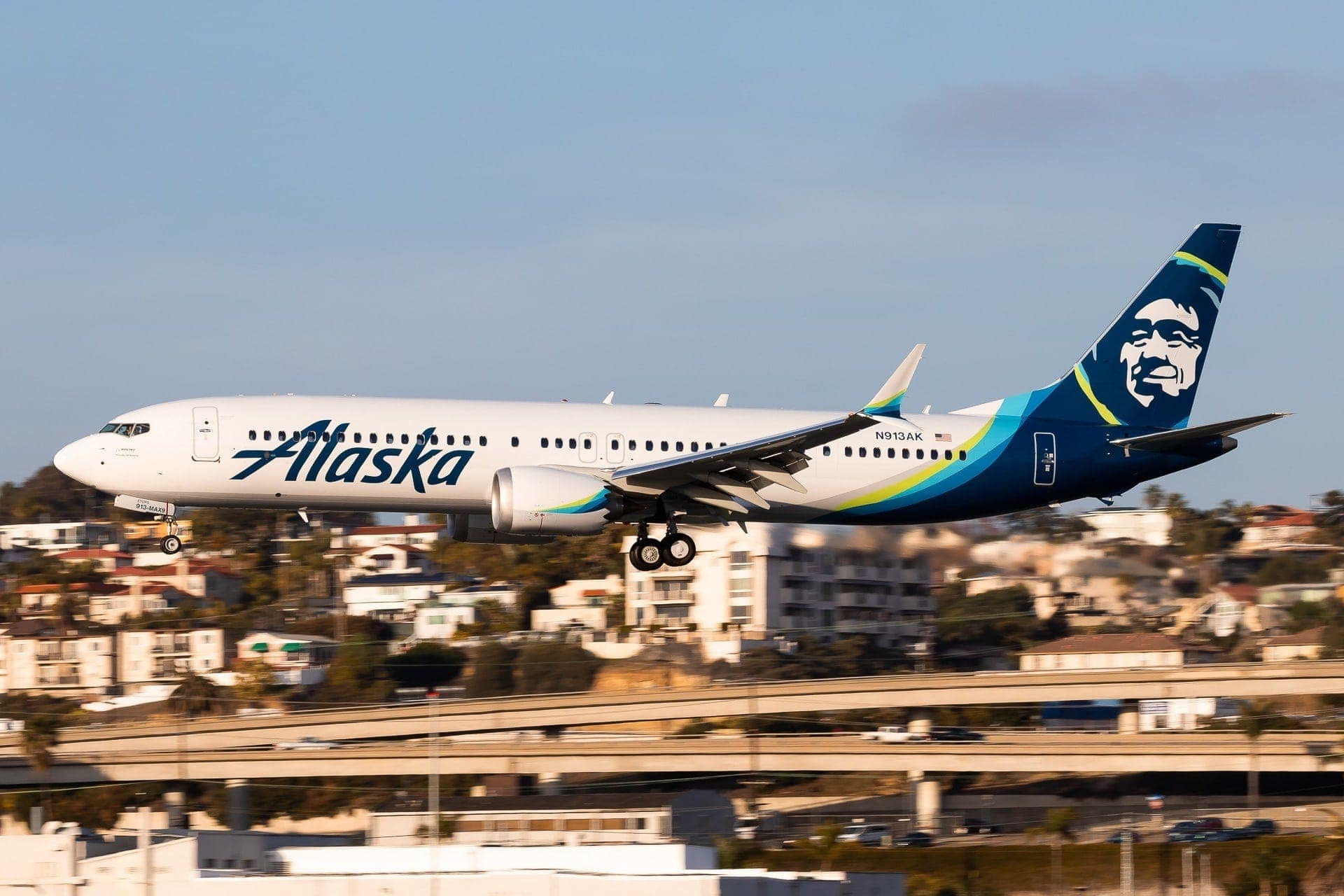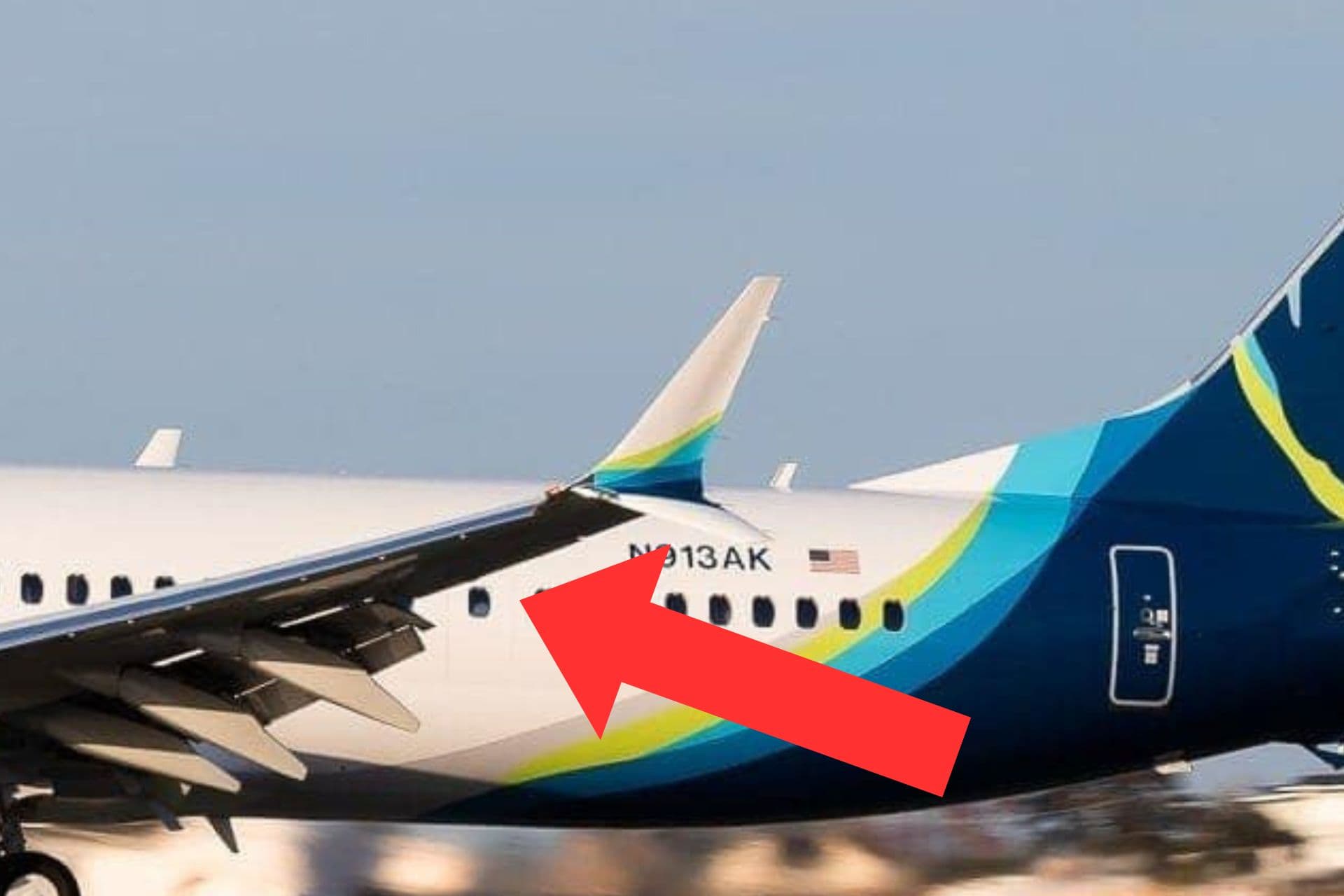
On Friday January 5th 2024 around 5:00 PM PST, an Alaska Airlines Boeing 737 MAX 9 operating as #ASA1282 from Portland OR to Ontario CA was flying at about 16,000 feet when a mid-aft exit door suddenly failed and caused a rapid depressurization of the cabin. Thankfully there were no injuries and the pilots were able to safely return to Portland for an uneventful landing.
Here is everything we know so far just a few hours after the incident.
The flight left Portland International Airport at around 4:52 PM with a normal takeoff. It wasn’t until about 15 minutes later at about 16,300 during climb out when the emergency occurred. The aircraft immediately declared an emergency and returned to PDX at approximately 5:27PM PST.
Here is a view of ASA 1282’s ADS-B data from FlightAware.

All 174 passengers and 6 crew members safely made it back to Portland.
Just a few hours earlier, this 737 MAX 9 made the cross country flight from New York’s JFK to Portland International.
As for what went wrong, it appears that a deactivated mid-aft emergency exit door had disconnected from the aircraft, creating a large hole in the fuselage. The aircraft immediately lost pressure, causing the oxygen masks to deploy. The seat closest was unoccupied at the time of the emergency. It’s not clear as to what exactly failed, whether it was the window or the entire door itself. This information will eventually come out once the FAA conducts its investigation.
Shortly after the incident, Alaska Airlines released a statement.
“While this type of occurrence is rare, our flight crew was trained and prepared to safely manage the situation," Alaska said "We are investigating what happened and will share more information as it becomes available.”
Boeing also reported it would be looking into the emergency situation.
“We are aware of the incident involving Alaska Airlines Flight 1282," Boeing said in a statement. "We are working to gather more information and are in contact with our airline customer. A Boeing technical team stands ready to support the investigation.”
It’s important to note that this door on all Alaska Airlines 737 MAX 9s is disabled directly from the Boeing factory. This exit is only utilized by some other carriers using the MAX 9 with more dense seating configurations. By law of the Federal Aviation Administration (FAA), each aircraft must be equipped with enough doors to safely evacuate at max capacity in 90 seconds using only half the available emergency exits. Carriers that added more seats to their MAX 9s were then required to utilize this extra door. In the case of Alaska, their MAX 9s are equipped with a plug or “dummy door”. From the inside of the cabin, passengers would just see a normal sidewall and window.

In this zoomed-in photo, you can see the outline of the left side, mid-aft dummy door.
The incident happened in row 26, directly next to seat A. This is 9 rows from the back of the plane.
This aircraft is configured to carry 178 passengers in a 2-class cabin layout.
Apparently, the blast was so powerful it ripped a child’s clothing off and sucked multiple passenger’s phones right out of their hands. This was certainly a startling experience, especially for those sitting close to the implosion. It probably happened so suddenly that many passengers couldn’t comprehend exactly what happened. While this and the JAL incident a few days ago may be extreme cases, these are important reminders that your seat belt should remain fastened at all times.
The exact aircraft in question is registered as N704AL - a brand new Boeing 737 MAX 9 delivered to Alaska in November of 2023.
Currently, there are 221 737 MAX 9 aircraft in service, with a majority of them belonging to US carriers United Airlines (79) and Alaska Airlines (65).
Of course, Boeing’s family of 737 MAXs do not have a clean history. The entire fleet was grounded for over 20 months back in 2018 due to two fatal accidents - Ethiopian Airlines Flight 302 and Lion Air Flight 610. These incidents were in part related to issues in Boeing’s MCAS (Maneuvering Characteristics Augmentation System), which is a flight stabilizing feature that helped make the new MAX generation of 737s mimic the behaviors of previous NG family.
The FAA will conduct their investigation and provide a preliminary report summarizing what happened, and what they know so far.
The FAA gave an official statement Friday evening.
“Alaska Airlines Flight 1282 returned safely to Portland International Airport around 5 p.m. local time on Friday, Jan. 5, after the crew reported a pressurization issue. The aircraft was traveling to Ontario International Airport in California. The FAA and the National Transportation Safety Board (NTSB) will investigate."
Late Friday night, Alaska announced it would be grounding its entire 737 MAX 9 fleet. On January 6th, the FAA declared a temporary grounding to all 737 MAX 9s operated by US airlines or in US territories.
Unfortunately, 2024 is off to a rocky start in the commercial aviation world, with the January 2nd incident with Japan Airlines at Tokyo’s Haneda Airport, and now this Alaska Airlines flight. We’ll provide more updates here as they become available.